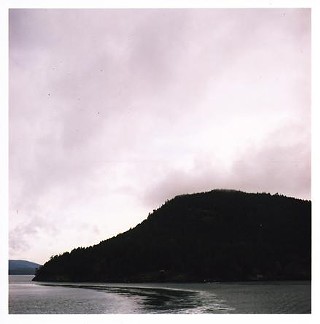Anne of Green Gables is drawing Prince William and Kate Middleton to PEI this summer, but you'd be hard-pressed to name a book that would entice royalty to Halifax. Nova Scotia's literature too often draws on pastoral tradition or promotes the lighthouses-and-bagpipes image of the province on view along the waterfront.
So, where's Halifax's urban fiction? For a city full of creative minds, our literature has been lacking in contemporary local content, but young writers and publishers in the city are working to change that---several novels set in Halifax have come out over the past few years, with more sure to follow.
Consider Christy Ann Conlin's Heave (Anchor, 2002), which moves between Halifax and the Valley as the 21-year-old protagonist passes out at Halifax bars and runs from the altar on her wedding day, adding up to an authentic, unidealized portrait of Nova Scotia.
CBC host Stephanie Domet's novel Homing (Invisible, 2007) includes a ghost who sulks around the Spring Garden library, a love story and homing pigeons. Ryan Turner's What We're Made Of (Oberon, 2009) is Halifax as young Haligonians know it---the characters hang out at the Trident and the Marquee and bemoan the journey to Bayers Lake. Hovering in post-university listlessness, everyone is always coming and going, moving to Toronto or going to teach English overseas.
Halifax-born, now Toronto-based Joey Comeau keeps Nova Scotia in his back catalogue. In It's Too Late to Say I'm Sorry (Loose Teeth, 2007), one story pokes fun at the Nova Scotia tourism industry with a guide turning a bicycle tour into a tour of ex-lover's houses, though some of Comeau's best Halifax stories are in his older zines, which you might still come across buried at local bookstores or the Anchor Archive Zine Library.
Novelist and journalist Elaine McCluskey's book Watermelon Social (Gaspereau, 2006) sets some of her stories in Haligonian locations, with a history of Nova Scotia giants, sailors, professors and characters who've "never been past Moncton." Her novel Going Fast (Goose Lane, 2009) interweaves the Halifax boxing community and a newsroom that's falling apart, replete with settings at the Tall Ships and eccentrically-painted houses.
Anne Emery's crime novels are full of Haligonian references for mystery fans: Barrington Street Blues (ECW, 2008) is a murder mystery set on, of course, Barrington Street. Characters drink at the Midtown Tavern, rent movies at Video Difference and their kids drop out of Dal; it's set in 1991, so some of the bar references are a bit out of date. Children in the Morning (ECW, 2010) features a Halifax girl who starts getting visions about a murder.
On the graphic front, the comic series Local, a miniseries from Oni Press by Brian Wood and Ryan Kelly that sets each issue in a different city, set a 2006 issue in Halifax; "The last lonely days at the Oxford Theatre," a mildly over-romanticized tale of the cinema. Superhero Girl artist Faith Erin Hicks will release a book set in a town that's not Halifax but looks just like it, called Friends With Boys (First Second) early next year, and, of course, there's Mike Holmes' True Story collection (Invisible, 2011).
If you're looking for something even newer and hotter and unpublished, the city's reading series are a good place to start---the living-room-based Allan Street Reading Series reached broiling temperatures last summer (full disclosure: I was a reader on one of those nights) and its successor, the Lilah Kemp Reading Series, promises the same, as well as the anecdote and story-telling Blowhard series.
If you're seeking work by Halifax publishers, Invisible Publishing has been garnering acclaim and discovering young authors since starting up in 2007, and two Wolfville publishers also deserve a mention---book-art oriented Gaspereau Press hit headlines across Canada when one of its titles won the Giller Prize last fall, The Sentimentalists by Johanna Skibsrud, and formerly Montreal-based Conundrum Press relocated in 2008 to ooze its energy over Nova Scotia.
Nimbus Publishing launched its imprint Vagrant Press in 2005, aiming to publish more contemporary fiction titles. The anthology The Vagrant Review of New Fiction (Vagrant, 2007) is a good starting point for local fiction, with work from young Maritime writers including Sarah Mian, Darcy Rhyno and Joey Comeau.

















